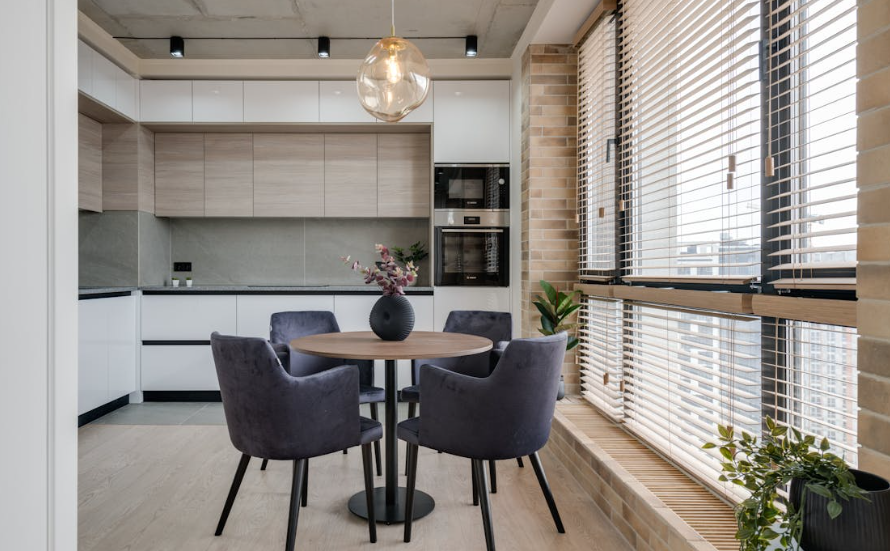Unveiling the Best Interior Blind Materials for Adelaide Households
When it comes to dressing up the windows of your Adelaide home, the material of your blinds plays a pivotal role in aesthetics and functionality.
With an array of materials available, choosing the right one can significantly impact the comfort, light control, and overall vibe of your living space.
Our comprehensive guide delves into the world of interior blind materials, offering insights to help you make an informed decision that aligns with your lifestyle and decor preferences.
A Deep Dive into Blind Material Options
Blinds come in a multitude of materials, each offering unique benefits and aesthetic appeal. The choices are vast, from natural wood and bamboo to synthetic options like polyester and PVC. Understanding the properties of each material is key to selecting the perfect window treatment for your space.
Natural Elegance with Wood and Bamboo
Wooden blinds exude timeless elegance and warmth, adding a touch of nature to your interiors. On the other hand, bamboo offers a more eco-friendly alternative known for its durability and lightweight design. Both materials are excellent for creating a cosy, natural ambience but may require more care in humid conditions to prevent warping or fading.
Modern Versatility with Synthetic Materials
For those seeking more durability and less maintenance, synthetic materials like polyester, PVC, and aluminium offer practical solutions. Polyester blinds are praised for their resistance to fading and their energy-efficient properties.
PVC blinds, while offering a similar look to wood, excel in moisture-rich environments such as kitchens and bathrooms. Aluminium blinds stand out for their lightweight design and high durability, making them an ideal choice for modern and minimalist decor styles.
Fabric Blinds: Softness and Style
Fabric blinds, including Roman and roller varieties, introduce a soft, elegant touch to your interiors. Available in a wide range of colours, patterns, and textures, fabric blinds allow for a higher degree of customisation to match your decor. They are particularly effective for light filtering and insulation, adding both style and functionality to your windows.
Establishing Your Needs: A Key to the Right Choice
Before settling on a material, consider factors such as the room’s exposure to sunlight, privacy needs, and the overall aesthetic you wish to achieve. High-traffic areas or spaces exposed to moisture may benefit from synthetic materials while living areas or bedrooms can be enhanced with the warmth and beauty of natural materials.
In your quest for the perfect models, exploring Adelaide’s popular blind material selections becomes an essential step. This broadens your understanding of what’s available and aligns your choice with your specific needs, ensuring that your selection adds both beauty and practicality to your home.
Sustainability and Window Treatments
As we grow more conscious of our environmental footprint, selecting sustainable materials for our homes, including window treatments, becomes increasingly important. Natural materials like bamboo offer aesthetic appeal and promote environmental sustainability due to their rapid growth and biodegradability. When choosing blinds, considering the sustainability of the material can contribute to a healthier planet and a greener home.
Installation and Maintenance: Keeping it Simple
The ease of installation and maintenance is another crucial aspect to consider. While natural materials may require more upkeep to maintain their appearance and functionality, synthetic options often offer the benefit of being low-maintenance and easy to clean, making them a convenient choice for busy households.
For a list that covers every residential base, it’s beneficial to examine trustworthy interior cleaning accessories as a general guide. Don’t be left short when these investments need to be thoroughly cleaned from top to bottom.
The Final Word
Choosing the right blind material is a crucial decision that impacts the aesthetics, functionality, and comfort of your living space. By considering factors such as material properties, room-specific needs, sustainability, and maintenance, you can select blinds that not only complement your decor but also enhance your daily living experience.
Remember, the right blinds can transform a room, influencing its lighting, privacy, and overall mood. Take your time to explore Adelaide’s top blind material options, and you’ll surely find the ideal blend of style, function, and sustainability for your home.
…





